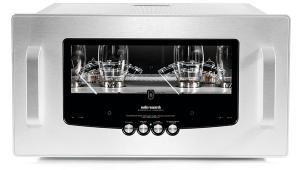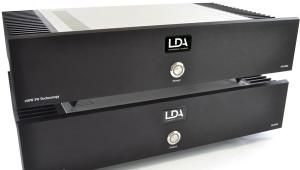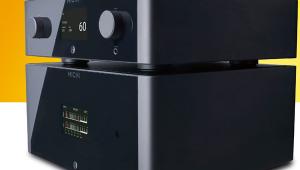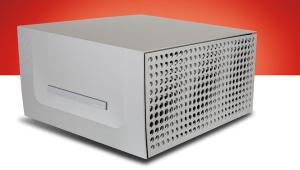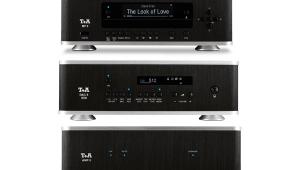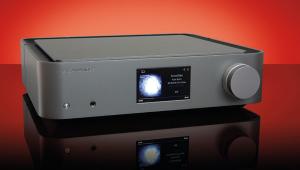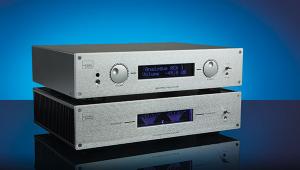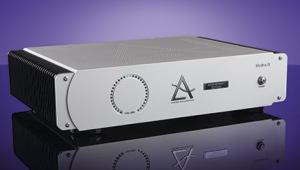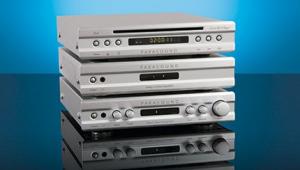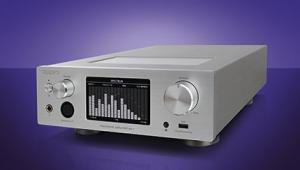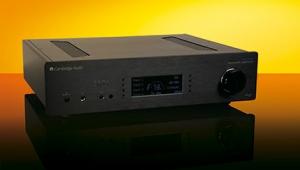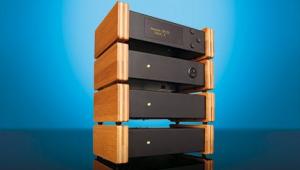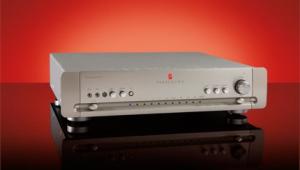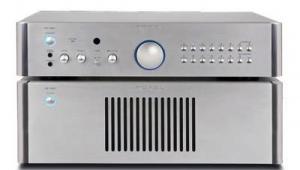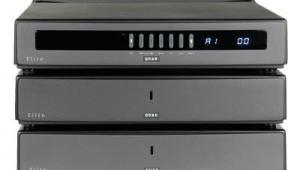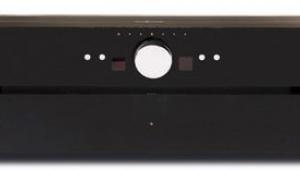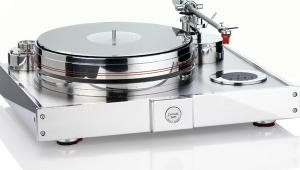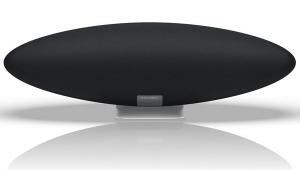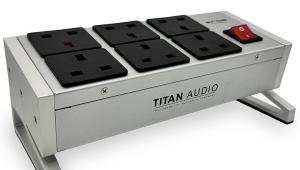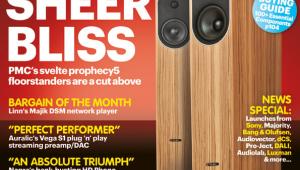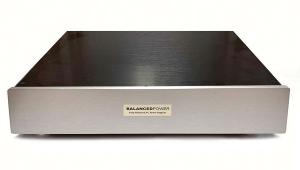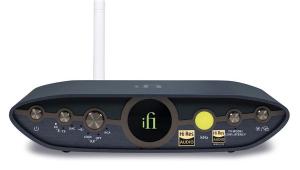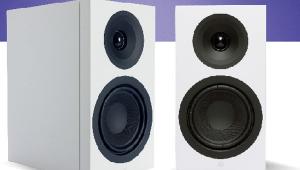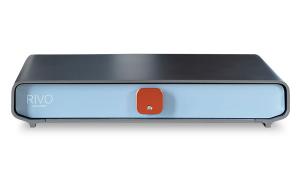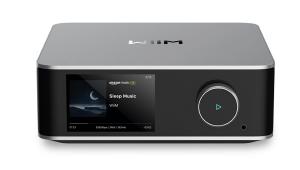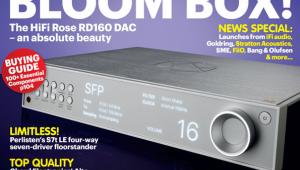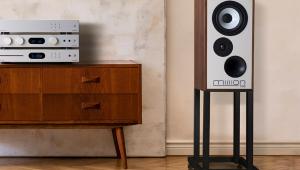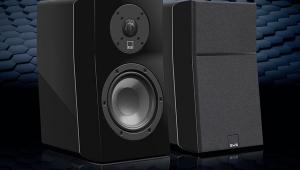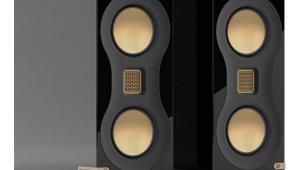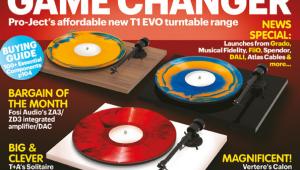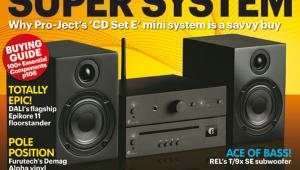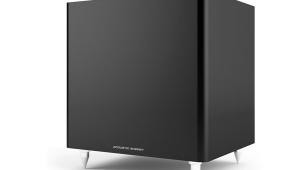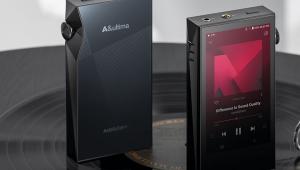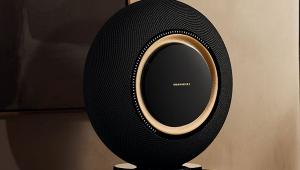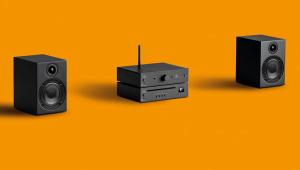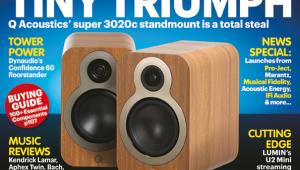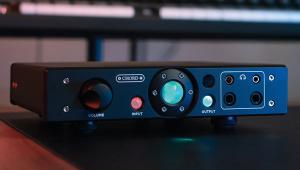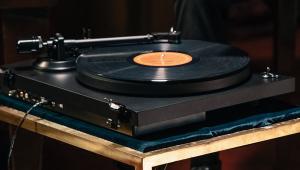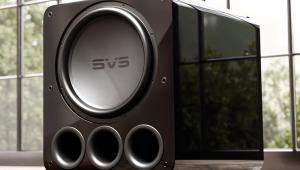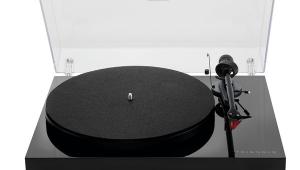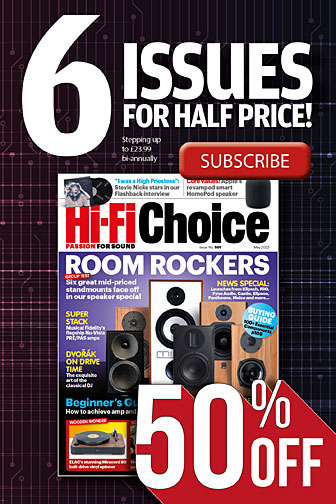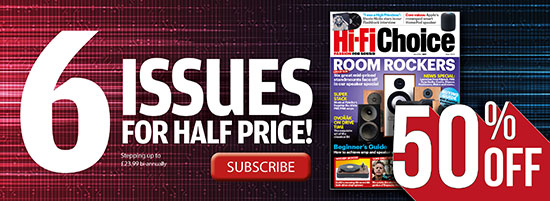Quad 33/303 (2024)
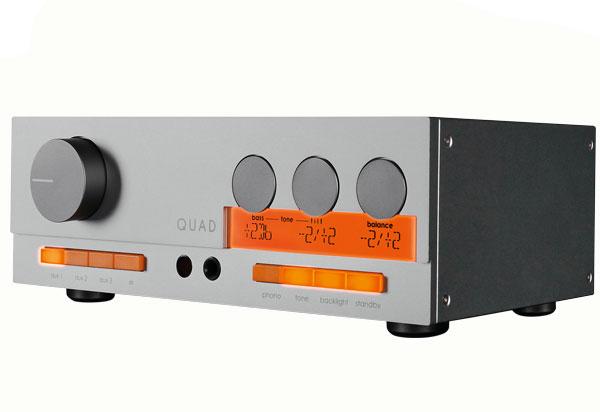
 It’s taken long enough but Quad has finally revived one of the best-selling pre/power amp combinations of all time. Between 1967 and 1982, 120,000 Quad 33 ‘control units’ were sold, while the 303 power amplifier remained in production until 1985 to reach 94,000 sales. So these new Quad 33 and 303 models have big shoes to fill, but retaining the original model designations and dimensions is a start. And that’s pretty much where the resemblance stops. Welcome to the 21st century.
It’s taken long enough but Quad has finally revived one of the best-selling pre/power amp combinations of all time. Between 1967 and 1982, 120,000 Quad 33 ‘control units’ were sold, while the 303 power amplifier remained in production until 1985 to reach 94,000 sales. So these new Quad 33 and 303 models have big shoes to fill, but retaining the original model designations and dimensions is a start. And that’s pretty much where the resemblance stops. Welcome to the 21st century.
Anyone that knows the originals will instantly recognise the look, which – as with the Thorens TD 124 DD and other revisited components – is crucial if the 33/303 is to exploit all that nostalgia promises. But Quad has been brave, avoiding ‘exact replica’ visuals. Instead, the 33 and 303 have undergone updating both outside and in, the aesthetic renewal as successful and crafty as that of the current Mini – familiar yet completely fresh. What’s so remarkable are the prices at just £1,200 per unit.
Go back to 1967 and a 33/303 system sold for £98, equal to £2,230 today. Add 20 percent VAT and the new combo costs over £400 less in real terms. And what you get is way more on every level. Just about the only thing which hasn’t changed is the circa-50W/8ohm power rating.
First was the look: placing the new set alongside the old, the reimagined 33 occupies 258 x 83 x 165mm (WxHxD) against the original’s 258 x 83 x 150mm, differing by a mere 15mm in depth. As for the revived 303, it’s the same width and depth as before, only 11mm taller. Visually, they’re exactly how you’d imagine the 33/303 might have evolved had they never ceased production.
As evinced by the 33’s back panel, modernisation includes not just MM/MC phono and three RCA line-level inputs, but a balanced XLR input as well – bye-bye DIN sockets. This is quite an achievement in such a small space, fitting maximum inputs in minimal real estate. That said, compactness was the 33’s greatest trend-setting move nearly 60 years ago. Quad has wisely ignored only one modern element in updating its preamplifier: no onboard DAC. And that’s a good thing, as quite a number of digital products could be said to have the shelf-life of a banana.
Outputs, too, have been dragged into the 2020s. In addition to Pre and Auxiliary RCA outputs, there’s a pair of XLRs for balanced operation. Also on the back of the 33 are 12V in/out triggers so you can switch on the 303 at the same time, as well as a main on/off rocker and a phono earthing post. Lastly, there’s a USB-A socket for firmware updates.
Hearts will swell for many upon first seeing the 33’s fascia. A motorised rotary ALPS volume control dominates the left side, while the right has three flush rotaries for balance and the signature variable tone controls. Quad has kept these even though tone controls fell out of favour around the time the 33/303 ended production. They work as before with far more restraint than conventional bass/treble controls, while the display makes them more useful thanks to numerical read-outs.
Ah, the display! Proving that ‘orange is the new blue’, it perfectly matches the lighting on MoFi’s MasterPhono the display glows like a Jaffa, as do the eight push-buttons. These handle selection of the three ‘aux’ inputs and XLR on the left, while the quartet to the right deal with phono, tone defeat, display on/off and standby. When the 33’s main power is switched on at the back, the standby button glows softly. Press it to turn on the unit and the illumination increases. The same applies to each press button when activated.
Every function is available via the preamp’s supplied remote control, so trying out the tone controls, for example, is possible from the listening position. Repeated pressing on ‘Phono’ chooses between MM and MC, the latter with enough gain for even low-ish output MCs. The addition of a headphone socket is one more bonus not found on the original. It’s worth mentioning, too, that the build quality and finish of both the 33 and the 303 are exemplary, with the older units’ corners and the rounded edges of the power amplifier’s heatsinks having been sharpened to look more contemporary.
The 303 is one honey of a (circa) 50-watter. We are lucky enough to get two supplied so we can test them in bridged form – this is not needed for the DeVore O/93s we use, but add a second one and it’s not just the available power that increases but also bass solidity, dynamic contrasts and speed.
As the 303 is so well-designed, you can probably undertake hook-up without checking the manual, but note that the legends can be difficult to see in certain lights. The colour scheme has changed from the original’s almost mud-hued grey to a titanium metallic, so white-on-silver lettering might challenge some users. Otherwise, push-buttons choose between RCA and XLR balanced ingress on the 303, while the multi-way binding posts are clearly marked for stereo or bridged mono.
Sound quality
Forget everything you know about the sound of the original 33/303. Playing old-and-new side-by-side, the Sixties pairing still sounds wonderfully warm, but lacks the ultimate precision, bass control and extension at the frequency extremes. Consider what Peter Walker unleashed in 1967, and you accept that these were voiced first and foremost for the Quad 57 ESL – their most likely partner. The new 33/303 has to face a world of lower impedance if typically higher sensitivity speakers to succeed.
And, wow, do they ever! We try out speakers from 4-15ohm impedance and 85dB-93dB sensitivity and power is never an issue. Adding a second 303 changes not just the dynamics due to the added wattage, but audibly tightens up the lower registers. All remarks from here on refer to a single 303 running in balanced mode, with the 33 in its tone-off position.
Appropriately, the first music sampled comes from a mono 1964 LP. The Animals’ eponymous debut is, for many, preferred in that mode, House Of The Rising Sun probably heard by more people over AM radio than off vinyl. Via the 33’s MC phono stage, the sound is crisp, with plenty of ‘twang’ on the guitars, while the two star elements – Alan Price’s Vox Continental organ and Eric Burdon’s achingly raw, inimitable vocals – are afforded a tactile presence you’d probably expect of a pairing with a zero added to the price.
At the same time, we run the matching CD, both to listen to a line input and to compare stereo versus mono; the CD offers both. As for the first, the resolution of the 33/303 system is enough to provide astute listeners with the information needed to compare analogue with digital, the latter still showing a mild but detectable artificial tint, which manifests itself in a crispness or edginess that runs perilously close to sibilance. The vinyl does not.
We also compare the 33’s phono stage with a state-of-the-art phono amp costing more than double the 33/303 combination. While it provides audibly superior transparency and cohesion, the 33’s phono section is easily worth the £500-£700 one would pay for a phono amp from MoFi or Pro-Ject, albeit without their desirable adjustability.
Moving to stereo material, Quad’s reborn pre/power pairing exhibits a blessedly wide soundstage – and with one 303, not a bridged pair. The stage depth is good if not astounding, but the width is enough to unleash the full scale of a Decca Gold cartridge as well as the glories of that show-off recording from 1958, Bob And Ray Throw A Stereo Spectacular on open-reel tape.
To savour fully this early champion of stereophonic sound, one needs cavernous openness and scale, as the musical numbers share playing time with sound effects – eg, creaking castle doors – and comedy narration. Here the revitalised 33/303 provides a reminder of that era when soundtrack and stage recordings were among audiophiles’ favourite fodder, as these units sound ‘huge’ in the literal sense.
If you really want to know how the new 33/303 manages the smoothness of the originals but with added detail, turn to some of the best-recorded jazz of the era. Any of the recent Craft reissues will serve, such as Howard McGhee’s Maggie’s Back In Town from 1961, with punchy brass and Leroy Vinnegar’s ‘walking bass’ as revealing as any test LP. This combination is hard to resist.
This begs the question about the two as separates rather than as a pairing. Although most original 33s and 303s were purchased as packages, the 33 outsold the 303 – precisely why remains something of a mystery. As a reverse of that, there’s a very good chance that the new 303 amplifier will outsell the 33 preamp, because of customers opting to bridge them. It’s also worth pointing out that the 33 is a perfect match sonically for the 303 (or two) and is just as much of a bargain, so the only reason for buying either but not both would be if one is replacing or upgrading just a preamp or power amp alone. Like the originals, the new amplifiers truly deserve each other.
Since the teaser images of the 33/303 appeared following 2024’s Munich High End Show, a significant quarter of the hi-fi community has been buzzing with anticipation. Those captivated by the promise of the photos won’t be disappointed.
All we would like to ask of Quad is to make this return complete and create in the 33 casework a digital ‘control unit’ with SACD/DAC/streaming functionality, referencing the look of its FM3 tuner. After all, its tuning scale is the ideal shape for a CD tray. Finish off with the double wooden sleeve and there will be no better example of the phrase, ‘Back To The Future’.
Conclusion
We are awash with integrated amps or pre/power pairings under £2,500, but the new Quad 33/303 stands out from the rest. We can’t help but find ourselves seduced by a listening experience that’s every bit as delightful as that of the original’s, with resultant night-long sessions. The 33/303 is a charmer, and Peter Walker would be proud. We’ll be buying a set as our mid-priced reference. What more can we say? HFC
DETAILS
Product: Quad 33/303 (2024)
Type: Preamplifier/power amplifier
FEATURES
● 33 inputs: 3x RCA; balanced XLR; MM/MC (switchable)
● 33 outputs: RCA aux; RCA pre out; XLR; 6.35mm headphone
● 303 quoted power output: 2x 50W (8ohm) 2x 70W (4ohm)
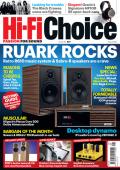 |
Inside this month's issue:
Ruark R610 music system and Sabre-R standmount speakers, PMC twenty.23i Active, floorstanders, English Acoustics Downton preamplifier, Bluesound NODE ICON preamp/streamer, Ortofon Concorde Music Blue MM cartridge and much, much more
|
